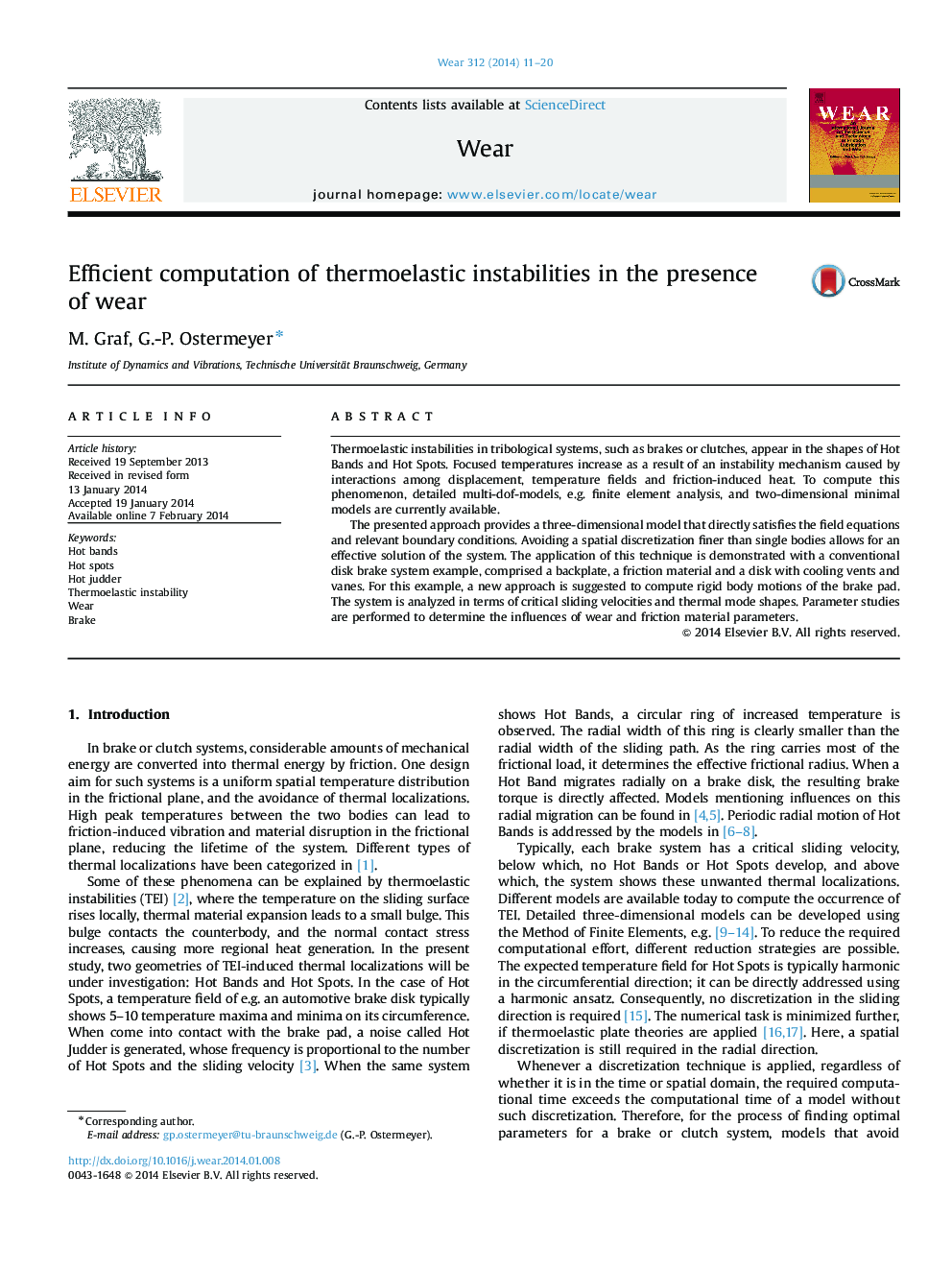| Article ID | Journal | Published Year | Pages | File Type |
|---|---|---|---|---|
| 617393 | Wear | 2014 | 10 Pages |
•We introduce a new model for thermoelastic instabilities in brake systems.•It allows a highly efficient computation as spatial discretization is avoided.•Parameter studies show potentials for avoiding Hot Bands and Hot Spots.•The effect of wear is a resulting radial migration of Hot Bands.
Thermoelastic instabilities in tribological systems, such as brakes or clutches, appear in the shapes of Hot Bands and Hot Spots. Focused temperatures increase as a result of an instability mechanism caused by interactions among displacement, temperature fields and friction-induced heat. To compute this phenomenon, detailed multi-dof-models, e.g. finite element analysis, and two-dimensional minimal models are currently available.The presented approach provides a three-dimensional model that directly satisfies the field equations and relevant boundary conditions. Avoiding a spatial discretization finer than single bodies allows for an effective solution of the system. The application of this technique is demonstrated with a conventional disk brake system example, comprised a backplate, a friction material and a disk with cooling vents and vanes. For this example, a new approach is suggested to compute rigid body motions of the brake pad. The system is analyzed in terms of critical sliding velocities and thermal mode shapes. Parameter studies are performed to determine the influences of wear and friction material parameters.
